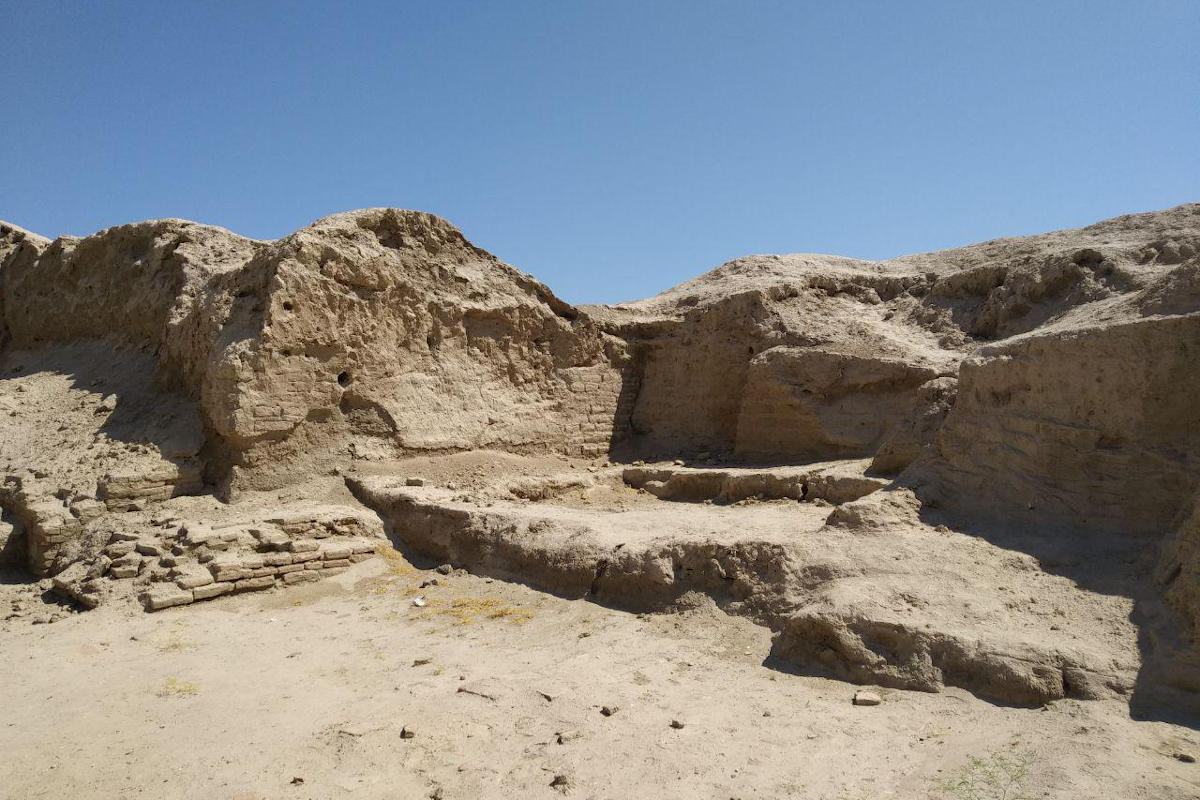Bukhara - the settlement Poykend
60 km southwest of Bukhara is the ancient settlement called Poykend with an area of about 20 hectares. There was a large trading town of Poykend or Lower Town until the middle of the 11th century.
The name is associated with the location of the town in the lower reaches of the Zeravshan River on the western border of Sogd. In the V-VIII century, the settlement of Poykend was the richest city in Bukhara. During the Vth century, Poykend was one of the main trade centres on the Great Silk Road, along with Samarkand.

Every year for half a year in spring, almost the entire male population of the city set out with the huge caravan for the borders of China. One of the bloody wars of the Turkish Khans and the Shahs of Persia ended in peace at the end of the VI century with the siege of Poykend by the Persian commander Bahram Chubin.
The settlement Poykend, together with Bukhara, submitted to the Arabs in the first decades of the VIII century. Century to the Arabs.
The Arabs destroyed a city after capturing vast wealth and taking the inhabitants captive. Gold and silver statues of pagan idols from the settlement of Poykend were melted down into ingots and sent to the court of the Khalif.
The merchants who returned from China in caravans ransomed some of the townspeople and rebuilt the town. The city centre of Poykend was a citadel of 90 x 90 m, and the first settlements on its territory appeared before time.
In the early Middle Ages, there was a ruler’s palace here, as well as temples and administrative buildings. Two shahristans adjoined the citadel: the first with an area of 12 hectares was inhabited by the Ephtalites, the second with an area of 7 hectares was built at the beginning of the VI century.
The medieval Poykend, including the two shahristans, was surrounded by fortress walls with towers every 60 metres. To the north of the settlement was a necropolis with Zoroastrian burial grounds.
During the Samanid rule, the city regained its position as a major trade and craft centre, competing with Bukhara. Dozens of new caravanserais sprang up around it. The remains of the XI century Juma Mosque were found on the city’s citadel and its minaret, judging by its base, surpassed the size of the Kalon minaret in Bukhara.
Due to the deepening of the Zeravshan, Poykend was deprived of water in the XI century and fell into disrepair. The city was swallowed up by the desert for thousands of years, which has preserved it until today.
In the XXth century, Poykend, which was rediscovered by archaeologists, was given the name “Pompey of Asia”.
This is how Muhammad Narshakhi describes the foundation of Poykend in his work “Tarikhi Bukhara” (10th century):
The Turkestan people from the southern Kazakh region near Bukhara founded a city and called it Poykend, the Rich City. “The people who came here from Turkestan settled here because this area had a lot of water and trees, there were beautiful places to hunt; all this appealed to the settlers.
At first they lived in yurts and tents, but then more and more people came here and the settlers started to build buildings. A lot of people gathered and they chose one from their milieu and made him the Amir. His name was Abruy.
The town itself did not exist yet, but there were already some villages, such as: Nur, Harkan-Rud, Vardana, Taravja, Safna, and Isvana. The large village where the king himself lived was called Poykend and the town was called Kala-i-Dabusi.
After some time, Abruya’s power grew and he began to rule the area brutally, so that the patience of the inhabitants was exhausted. The peasants and rich merchants left this area for Turkestan and Taraz, where they built a city and called it Khamukat, because the great peasants who were at the head of the resettlers called Khamuk, which in the language of Bukhara means pearls, and Kat means a city; thus this name meant “city of Khamuk”.
In general, the people of Bukhara call the nobles “Khamuk”. Those who stayed in Bukhara sent ambassadors to their nobles asking to protect them from the violence of Abruya. The nobles and the peasants asked the ruler of the Turks named Kara-Jurin-Turk, whom the people called Biyagu because of his greatness, for help.
Biyagu immediately sent his son Shiri-Kishwar with a large army. He arrived in Bukhara, seized Abruya by Poykend and ordered a large sack to be filled with red bees and made Abruya fall into it, from which he died.
Shiri-Kishwar liked the land he had conquered very much and sent a letter to his father asking him to appoint him ruler of this region and to be allowed to settle in Bukhara. Soon he received the reply that Biyagu was leaving this province to him.
Shiri-Kishwar sent an ambassador to Khamukat to persuade him to bring back home all those who had fled Bukhara with their families. He wrote a letter promising that all those who had returned to Bukhara from Khamukat at his invitation would become his neighbours.
This promise was caused by the fact that all the rich and nobles were expelled and the poor and lower class remained in Bukhara…”.
